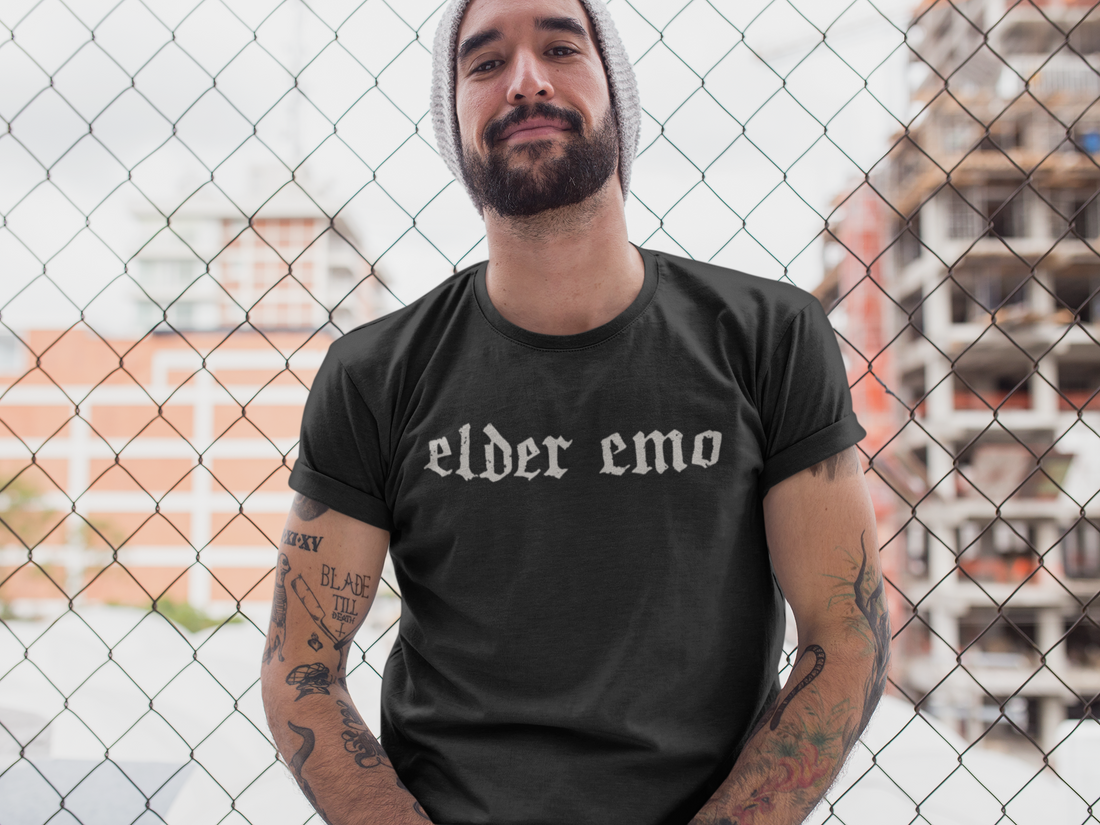
What is an Elder Emo?
Share
What is an Elder Emo?
In the vast, ever-evolving landscape of music and subcultures, few have had the lasting impact of emo. From its raw, heartfelt lyrics to its distinctive fashion, emo has touched the lives of many since its rise in the late 1990s and early 2000s. But as time has passed, so too have the fans who once lived and breathed the scene. Enter the "elder emo"—a term that has gained popularity in recent years, describing those who have grown up with the emo movement and are now embracing their roots in a new, mature way.
The Birth of Emo
To understand what makes someone an elder emo, it's important to first grasp the essence of emo itself. Originally short for "emotional hardcore," emo began as a subgenre of punk rock in the mid-1980s. Bands like Rites of Spring and Embrace were among the pioneers, blending punk's raw energy with deeply personal, introspective lyrics. The genre evolved through the 1990s and 2000s, with bands like My Chemical Romance, Fall Out Boy, and Dashboard Confessional bringing emo to the mainstream.
For many teens and young adults, emo was more than just music—it was an identity. The emo subculture was characterized by a distinct fashion sense, including skinny jeans, band tees, studded belts, and an iconic hairstyle often featuring long bangs swept to the side. But emo was also about emotion, introspection, and often a sense of not fitting in with the mainstream.
Be sure to check out our Ultimate Guide to Emo Music
Who Are the Elder Emos?
As the years passed, the emo scene experienced peaks and valleys in popularity. Some fans moved on to other genres and subcultures, while others carried the torch into adulthood. These fans are now lovingly referred to as "elder emos." But who exactly qualifies as an elder emo?
An elder emo is someone who grew up during the height of the emo movement, typically in the late 1990s and early 2000s. They likely have fond memories of discovering bands on MySpace, attending Warped Tour, and spending hours crafting the perfect emo playlist on their iPod. For elder emos, the music and culture were integral parts of their adolescence and young adulthood.
Now, years later, they continue to embrace their emo roots, albeit with a more refined, grown-up approach. This might mean revisiting old albums with a sense of nostalgia, attending reunion tours, or even introducing their own children to the music they once loved. Some elder emos have even found creative ways to merge their past with their present, incorporating elements of emo fashion into their everyday style or connecting with others online who share similar experiences.
The Elder Emo Aesthetic
While the youthful emo scene was often associated with rebellion and angst, the elder emo aesthetic is more about embracing nostalgia with a dash of self-awareness. It's not uncommon to see elder emos rocking band tees from their favorite bands, but paired with a blazer or a pair of stylish boots. Their hair might not be as dramatically styled as it once was, but there's often still a nod to their emo past in the way they present themselves.
Moreover, the elder emo experience is often marked by a deep appreciation for the music that defined their youth. They might still blast "Helena" or "Sugar, We're Goin Down" in their car, but now with a sense of fondness rather than the intense emotion they felt as teens. The lyrics that once resonated so deeply may now carry new meanings, shaped by years of life experience.
Be sure to check out our collection of Elder Emo shirts, hoodies, accessories and more.
Why Elder Emos Matter
The emergence of elder emos highlights the lasting impact of the emo movement. While the music and fashion may have evolved, the emotional connection remains strong. Elder emos serve as a testament to the power of music to shape identities and connect people across time and space.
In a way, elder emos are like the keepers of the emo flame, ensuring that the music and culture continue to be appreciated by new generations. They offer a bridge between the past and the present, showing that it's possible to grow up without losing touch with the things that once made you feel alive.
Conclusion
In the end, an elder emo is more than just someone who listened to emo music in their youth. They are individuals who have carried the spirit of emo with them into adulthood, finding new ways to express their love for the music and culture that shaped them. Whether they're attending reunion shows, revisiting old albums, or simply reflecting on the past with a sense of nostalgia, elder emos prove that the impact of emo is far from fleeting—it’s a lifelong connection that only deepens with time.

